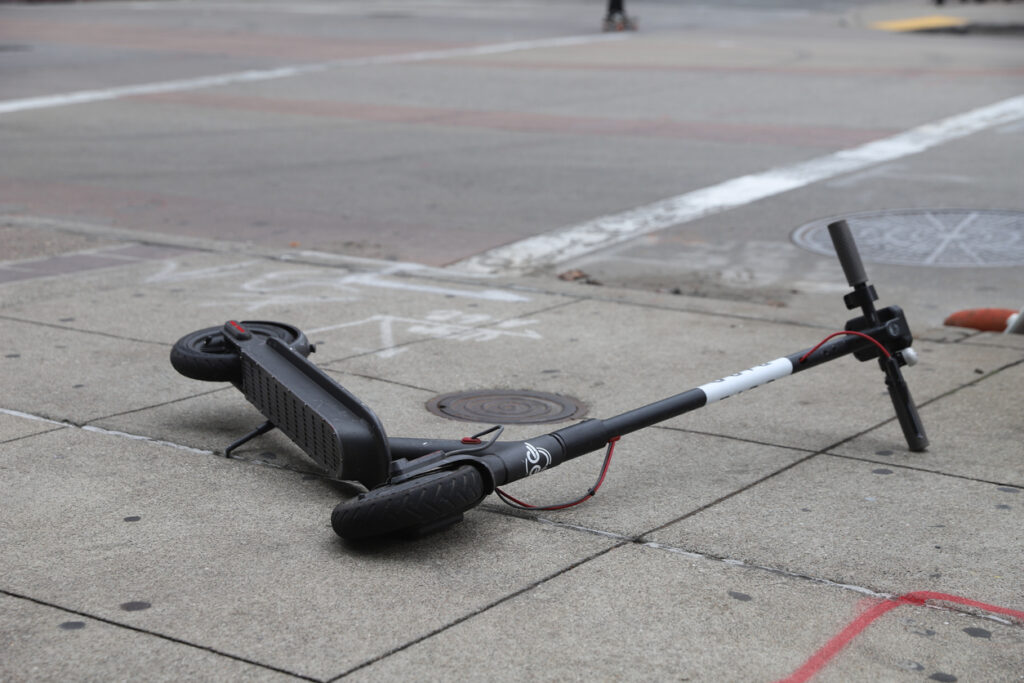The following is part one of an open letter to Scoot, Skip, and other providers of electric scooters detailing serious safety concerns I have pertaining to their scooter rental businesses. Part two will be published next week.
I wrote this letter because, as a trial lawyer representing seriously injured people, I see preventable tragedy ahead. The current circumstances remind me of 2012-2013, when Uber and Lyft first hit the streets and I was writing about the inevitable injury and death I could foresee from their business models, as well as the resulting insurance crisis in which victims would be unable to receive compensation for medical expenses, lost wages, and loss of loved ones.
Tragically, shortly after I wrote about those risks, Sophia Liu was killed by an Uber driver on New Year Eve of 2013 and Uber denied any responsibility for her death. After Sophia’s death, I was retained by her family and pursued both a lawsuit on their behalf and, in conjunction with the Consumer Attorneys of California, a change in the law to require Uber and Lyft to provide one million dollars insurance coverage for people injured by their services.
The time has come for these “new scooter transportation services” to act like responsible businesses and ensure their users are not left with life-altering injuries and hundreds of thousands in hospital bills.
To Whom It May Concern:
I am writing you to put you on notice of safety risks created by your products/services, your non-compliance with the California Vehicle Code, your unconscionable contract clauses which harm your consumers, and the lack of insurance coverage which will leave your users financially and, in many instances, physically crippled for life if injured in a collision. I appeal to your consciences and implore you to take immediate action to correct these very real threats to public safety before someone is severely injured or killed. I can assure you that such a day is unfortunately, and inevitably, fast approaching. You now have the opportunity to act as a socially responsible business by adapting your model to prevent injury and protect those who will ultimately be harmed by the use of your product.
Based on my review the following is my educated legal opinion about the dangers and legal violations which your products/services create.
Your devices appear to fall under regulations promulgated under the California Vehicle Code, meeting the definition of an “electronically motorized board (EMB)” pursuant to California Vehicle Code Section 313.5.
Your products/services are defective due to their lack of providing required head protection (helmets). California Vehicle Code Section 313.5 requires that a user of an EMB use a helmet if they are operating on a roadway, sidewalk or bike path. You know your products will be operated on these facilities, yet you provide no helmets! That is analogous to a rental car company renting vehicles without seatbelts. Any casual observer can see that the majority of users of your products are helmetless. As such, you should provide a helmet or obtain proof of the use of a helmet before you rent your product. Anything less is socially irresponsible and uncaring for your customers. The fact that it may be difficult to create a mechanism to reliably provide each user with a helmet does not circumvent the requirement that a helmet be used.
Your devices violate minimum visibility requirements. Along with head protection, there is probably no bigger safety factor than visibility. California Vehicle Code Section 21293 requires that EMB’s meet certain minimum visibility standards: 1) a headlight that provides a minimum of 100 feet of visibility; 2) a red tail light visible from a minimum of 500 feet; and 3) white or yellow reflectors on the sides visible from no less than 200 feet. To comply with Section 21293, the lighting must be visible to others who are using the travel ways and may be affected by the movement of the scooters. A review of your scooters on the roadways demonstrates that most, if not all, vehicles violate these visibility requirements. While Scoot vehicles have headlights mounted on their handlebars, and therefore visible to others in a normal and customary manner, their luminosity is questionable and may vary depending on the charge in the battery. Skip vehicles have lights positioned on the floorboard, less than 10 inches off the ground. These lights may provide some visibility for the user to see roadway defects, but do not alert other roadway users to the scooter’s presence. Moreover, neither service provides white or yellow reflectors on the sides of the devices and their rear tail lamps are weak, small, and too low to be meaningfully visible. In short, these devices appear to be defective and dangerous products manufactured and operated in violation of the California Vehicle Code.










